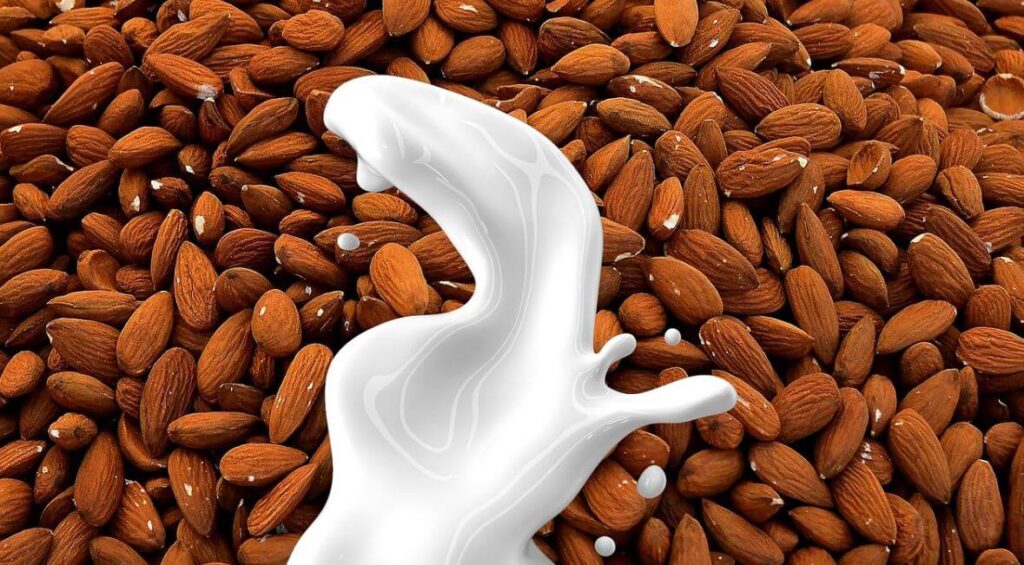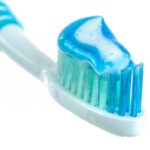Tried making your own almond milk yet?
Almond milk’s popularity is soaring, and for good reason – it’s delicious, especially when homemade! Making your own is surprisingly easy and more affordable than store-bought versions.
While almonds are a source of Omega-3s, it’s important to note they contain ALA (alpha-linolenic acid), a plant-based precursor, not the EPA and DHA found in fish oil. However, they offer other valuable nutrients. Almond skins are packed with polyphenol antioxidants, which have been linked to protection against cancer and cardiovascular disease, and possess antimicrobial properties. They’re also rich in dietary fiber and act as prebiotics, nourishing beneficial gut bacteria. (Mandalari, 2012)
Why Soak Your Almonds?
Soaking raw almonds in water for at least 7 hours, or preferably overnight (using about 100g of almonds for 1 liter of milk), is a crucial step. This process softens the almonds, releases nutrients, and significantly improves digestibility. Soaking breaks down phytic acid, a compound that can hinder the absorption of iron, zinc, and calcium. (Arnarson, 2018; Schlemmer et al., 2009). Phytic acid levels in almonds can range from 0.5% to over 9%. Regular almond milk drinkers will benefit from soaking, not only for better nutrient absorption but also for a smoother blend and potentially improved taste.
Making Your Almond Milk:
After soaking, simply pinch off the skins (a quick online search can provide helpful videos). Don’t discard the skins! Dry them and grind them into flour for baking or granola, or use them as gardening mulch.
Combine the soaked and peeled almonds with 4 cups of water (cold or hot), 2-4 pitted dates (or a spoonful of honey or maple syrup) for sweetness, and a pinch of salt in a blender. Blend until smooth, then strain the mixture through a tea towel or nut bag. Squeeze out all the liquid for the best yield. The result? Silky smooth, homemade almond milk!
Ingredients:
- 100g soaked almonds (dry weight)
- 4 cups water (cold or hot)
- 2-4 pitted dates (or sweetener of choice)
- Pinch of salt
What to Avoid:
- Don’t use roasted or salted almonds: Stick to raw, high-quality nuts. Discard any rancid nuts.
- Don’t skip soaking: It’s essential for digestibility and nutrient availability.
- Don’t get the ratio wrong: Use a 4:1 water-to-almond ratio. Feel free to experiment with other nuts while maintaining this ratio.
- Don’t skimp on blending: Blend thoroughly for a creamy texture.
- Don’t use a tea strainer: A tea towel or nut bag is necessary for effective straining.
- Don’t forget flavor: Sweeten and add a pinch of salt to enhance the flavor. Try soaking almonds with a cinnamon stick for a subtle spice.
Using the Almond Pulp:
Don’t throw away the leftover almond pulp! It can be used in baking, granola, added to curries, or even used as a body scrub.
A Note for Vegans:
While almond milk contains ALA, it doesn’t provide significant amounts of EPA and DHA. Vegans can obtain these essential Omega-3s from seaweed and microalgae, the same source fish get them from. Algae oil supplements are a great vegan alternative to fish oil. (Turner, 2017)
Bonus Recipe: Almond Milk Chia Pudding
Combine warm almond milk with chia seeds and let it sit for 30 minutes to thicken. Sprinkle with cinnamon for a delicious and healthy snack pudding.



